A (Very Brief) History of Architecture in Shanghai 🏢
An Introduction to Shanghai’s Concessions, Shikumen, & More
Shanghai is arguably one of the greatest cities in the world (my own little biased opinion that is), and the architecture in Shanghai says a lot about its history.
In China, it certainly would be the city that welcomes (and welcomed) foreign influence the most.
This is a brief introduction to just some of the architecture in Shanghai.
Longtang, Lilong, and Shikumen
Shanghai as the “Old City” (Fun Facts)
The Shanghai Race Club (Fun Facts)
Lujiazui at 195 Billion Pixel (Fun Facts)
A History of Architecture in Shanghai: FAQs

Shanghai Ghetto 🤔 The Lost History Of Shanghai’s Jewish District
Explore some eye-opening history in the former Jewish neighborhood in Hongkou district or as it was once referred to the ‘Shanghai Jewish Ghetto’.
Concessions
A reason why some architecture in Shanghai seems to be very Western is because Western countries had concessions in Shanghai in the 19th and 20th centuries.
Shanghai opened up to foreign influence after the First Opium War (第一次鸦片战争) which ended in 1842 as the result of a treaty (条约) — it was one of the first Chinese cities to do so.
Up until then, Shanghai was considerably less significant; after that, Shanghai’s location at the mouth of the Huangpu River (黄浦江), which flows into the Yangtze River (长江), and on the coast of China made it a strategic treaty port (条约港口).

Text of map reads from left to right, top the bottom: Paoshan (Baoshan District), English Settlement, French Concession, Yangtzepoo (Yangpu District), English Settlement, French Concession, “The circular is Old Chinese Wall City” (Old City), Chinese City
A HD scan of this map can be found here
Given that these concessions were under the control of Western powers, the building styles here are a lot more reminiscent of architecture in Britain, France, America, and so forth.
In detail, most well-known concessions (租界; zūjiè) would likely be the French, British, and American concessions, which in the present day are located around:
- Xuhui District (徐汇区)
- Huangpu District (黄浦区)
- Jing’an District (静安区)
- Hongkou District (虹口区)
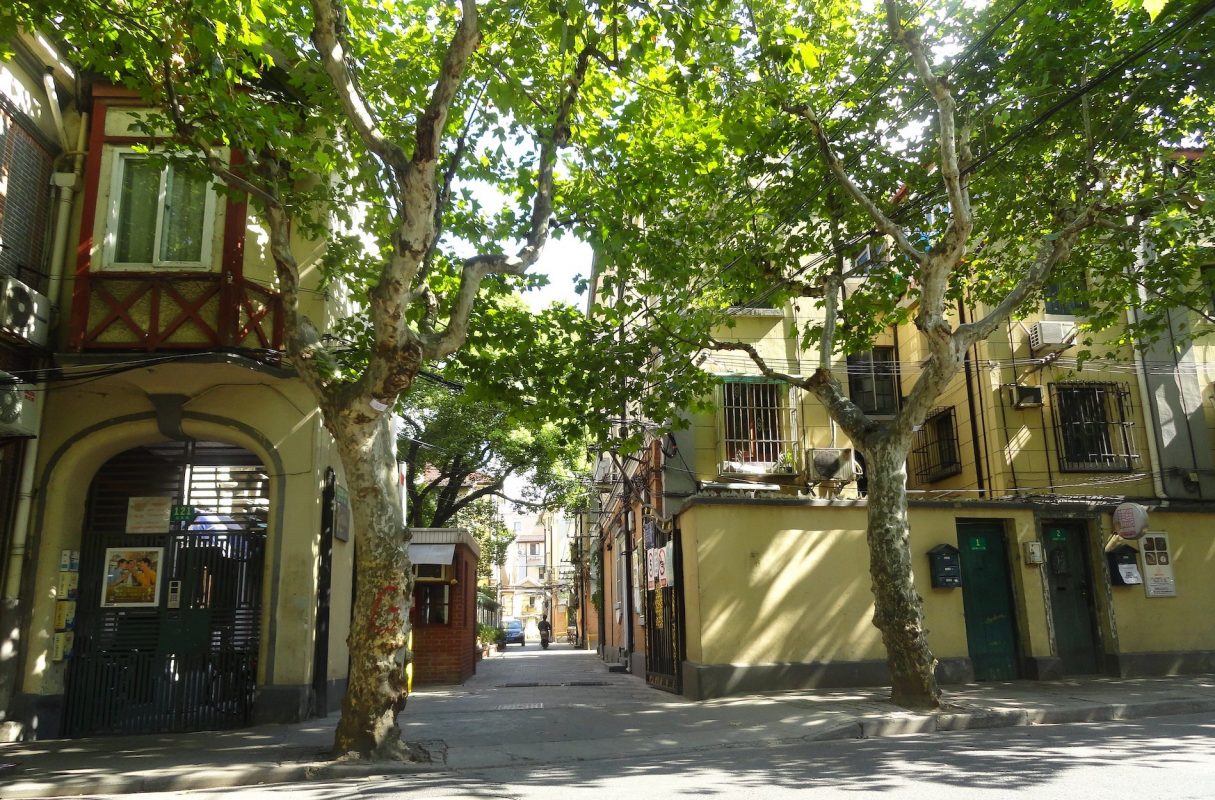
The Bund
The Bund (外滩) is one of the most recognizable sites of Shanghai, located five minutes away from the East Nanjing Road subway station (Line 2).
Historically, the area has been a center for banks, trading houses, and consulates.
A very international mix, it originally was a part of the British concession and the International Settlement (which was the merged British and American concessions).
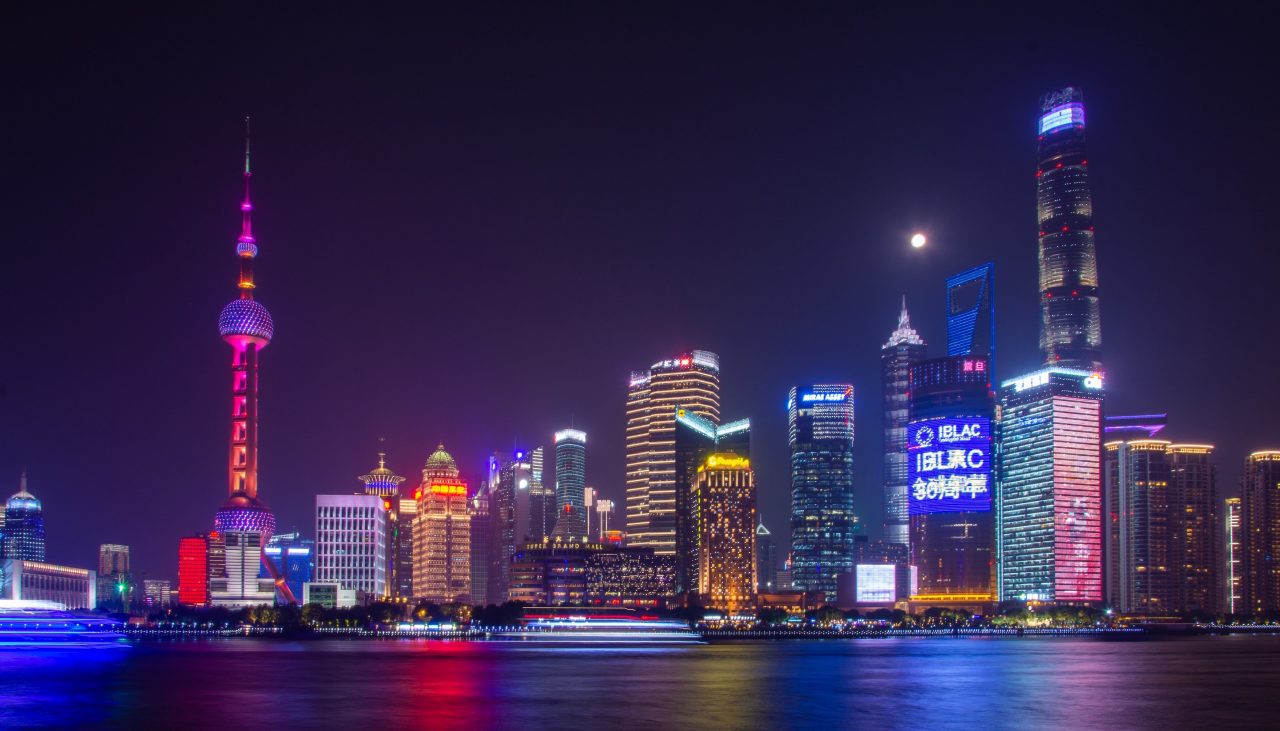
Nowadays, it houses some of the most important financial institutions of Shanghai.
While the Bund offers a variety of different architectural styles, one of the most notable styles is Art Deco (艺术装饰).
Art Deco rose to prominence in the 1920s and 1930s — whereas the West was going through the Great Depression during this time, Shanghai was thriving.
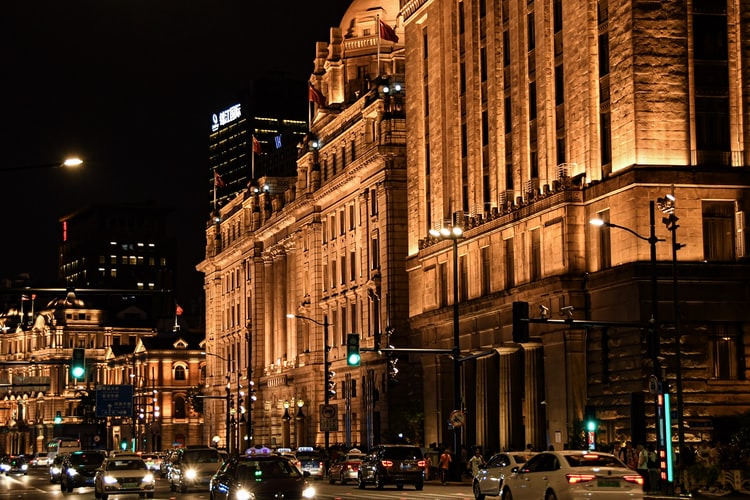
Longtang, Lilong, and Shikumen
A longtang (弄堂) is essentially community of lilong (里弄), which are lane houses.
Specifically, a lilong usually is a single narrow street of houses. An example of lilong is shikumen (石库门).
Shikumen (石库门) is a feature of the architecture in Shanghai.
Given that it rose around the 1860s, it understandably combines both Western and Chinese influences. It is unique in its elaborate gates and use of stone.
Even though many shikumen buildings have been destroyed in favor of larger and taller apartments, many are still standing and under government protection.
Tianzifang (田子坊) and Xintiandi (新天地) are modernized shikumen spots in the former French concession.
Even though the architecture is in the shikumen style, the culture of Tianzifang and Xintiandi have evolved into something of its own.

They have become very touristy locations, known for its restaurants and entertainment, and are expensive areas to live in.
Tianzifang is near the subway station Dapuqiao on Line 9, and Xintiandi is near the subway station Xintiandi on Line 10.

Shanghai Metro 🚄 All 414 Stations and 16 Lines (2023 Update)
The Shanghai Metro is HUGE – in fact there are a total of 414 stations and 16 lines as of 2020 and more will follow. Check out our complete guide for more.
Fun Facts: Shanghai as the “Old City”
Before Shanghai became the metropolis it is today, its urban center was small and dubbed the “Old City”: 上海老城厢 (shànghǎi lǎo chéngxiāng).
A city wall bordered the Old City, which was common for its time. Although much of it has been torn down, the boundaries of the walls are visible on a map of Shanghai today through its streets.
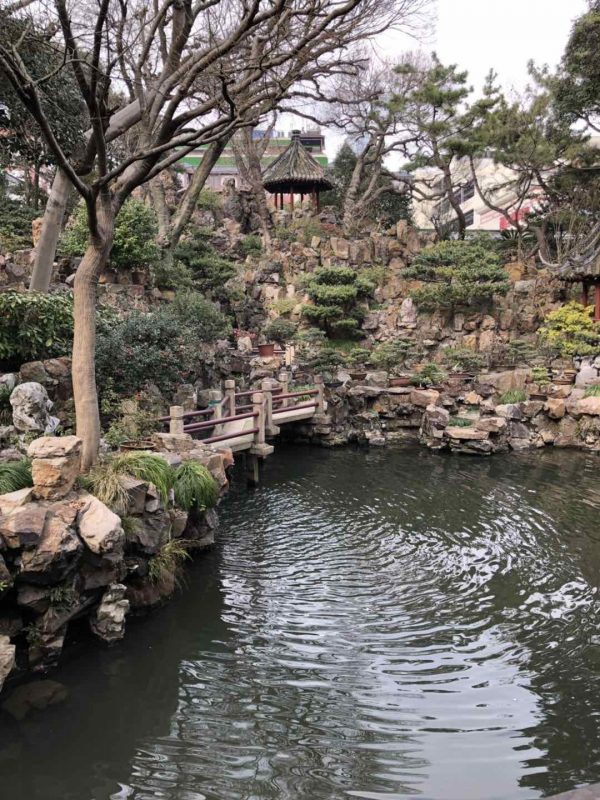
As the Old City was primarily for Chinese residents, the architecture here is a lot more Chinese and traditional than its other counterparts.
Yuyuan Garden and City God Temple, for instance, reflect this well.
Yuyuan Garden (豫园) is a traditional Chinese garden from the Ming Dynasty (明朝) in the 16th century.
Governor Pan Yunduan (潘允端) had it built for his parents as a comfort for old age.
Conflict destroyed much of the original structures, so a lot of what you would see at Yuyuan now are restorations. Yuyuan Garden has an eponymous subway station on Line 10.
City God Temple (城隍庙) is, as the name suggests, a temple from the 15th century.
Rooted in Chinese folk religion, the City God Temple protected the people in Shanghai.
Today, there are Taoist priests on site (Taoism: 道教). City God Temple is about a 10 minutes’ walk from Yuyuan Garden on Line 10.
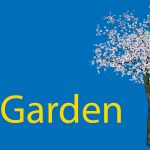
The Gardens of Shanghai 🌳 Yuyuan Garden 豫园
Yu Garden – Are you looking for a place to relax? Maybe somewhere scenic, with historic buildings? Yu Garden is just the place you want to go.
Fun Facts: The Shanghai Race Club
The Shanghai Race Club (上海跑马总会) was a horse racing club, now defunct.
The club had a racetrack west of the Huangpu River, which is no longer there today.
Nonetheless, the trail itself is still visible as the streets of People’s Park (人民公园) follow the racetrack.
People’s Park is accessible through multiple exits of subway station People’s Square on Lines 1, 2, and 8.
City center of Shanghai, 1944. “Old City” (labelled “Chinese City” on map) is the circular area on the bottom half of the map. The Shanghai Race Club (labelled “Race Club” on map) is the circular area on the center left. Courtesy of the University of Texas Libraries, The University of Texas at Austin.
The circular green area on the top left is People’s Park. The shape of the streets is where the former race track used to be. The circular area just left of the Huangpu River, formed by roads, is where the Old City’s walls used to be. Screenshot of Shanghai Google Maps, July 2020.
Fun Facts: Lujiazui at 195 Billion Pixels
Lujiazui (陆家嘴) is the business and financial area of Shanghai located in Pudong New Area (浦东新区).
In 2018, Big Pixel Technology Corporation released a panorama of Shanghai’s Lujiazui taken hundreds of meters above the Oriental Pearl Tower (东方明珠).
At 195 billion pixels, it’s the third largest photo in the world.
The quality is so clear you can see people’s faces and license plates. From 230 meters above the Pearl Tower. Literally.
Lujiazui has its own subway station on Line 2.
That concludes our look into architecture in Shanghai, we hope this proved to be a starting point and insight into the city of Shanghai. Have you seen any of the above before? Drop us a comment below with your thoughts 🙂
Before we leave you, it’s time to learn some useful Chinese words with this video below, all relating to buildings and architecture in Chinese! Enjoy
A History of Architecture in Shanghai: FAQs
What’s a concession?
A concession is 租界 (zūjiè).
In the context of Shanghai, a concession was an area foreign powers held rights to, granted by the Chinese government.
They were first established after the Opium War.
Where are Shanghai’s concessions?
The most popular concessions are the French concession and the International Settlement, aka the combined British and American concessions.
They’re around present day Xuhui District, Huangpu District, Jing’an District, and Hongkou District.
What is the Bund? How do I get there?
The Bund is a strip along the Huangpu River. It houses some of the most important financial institutions of Shanghai and a few consulates and is a very popular tourist attraction.
The Bund is a 5-10 minute walk from East Nanjing Road subway station (南京东路) on Lines 2 and 10, exit 2.
What are Longtang, Lilong and Shikumen?
A longtang (弄堂) is essentially a community of lilong (里弄).
Lilong (里弄) are lane houses, usually is a single narrow street of houses.
An example of lilong is shikumen (石库门), distinctive through its elaborate gates and use of stone.
Shikumen is a Shanghainese architectural style.
Where are Tianzifang and Xintiandi?
Tianzifang (田子坊) and Xintiandi (新天地) are modernized shikumen neighbourhoods in the former French concession.
Tianzifang is near subway station Dapuqiao on Line 9.
Xintiandi is near subway station Xintiandi (exit 1) on Line 10.
What’s the “Old City”? Where are Yuyuan Garden and City God Temple?
The “Old City” — the historical core area of Shanghai — is 上海老城厢. Yuyuan Garden and City God Temple are located in there.
Both can be reached through Line 10 on the subway, Yuyuan Garden station (豫园) exit 1.
What’s the really big photo of Lujiazui?
Want more from LTL?
If you wish to hear more from LTL Mandarin School, why not join our mailing list?
Why not starting learning Chinese online?
We give plenty of handy information on learning Chinese, useful apps to learn the language and everything going on at our LTL schools!
Sign up below and become part of our ever growing community!
We also offer online Chinese classes tailored to you, check them out!
![[𝗢𝗟𝗗] LTL Shanghai Logo](https://old.ltl-shanghai.com/wp-content/sites/3/logo-ltl-header.png)


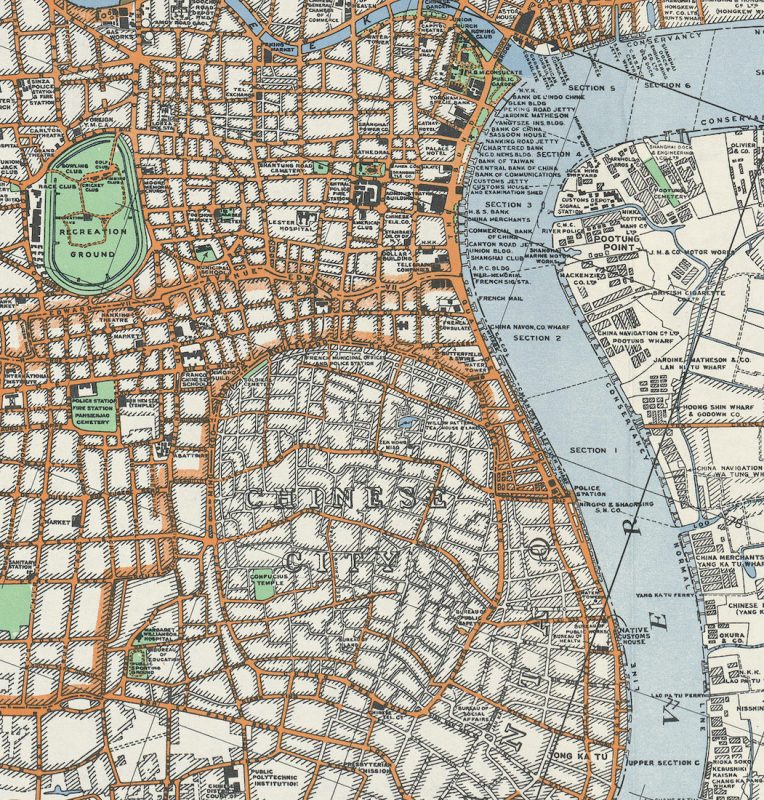
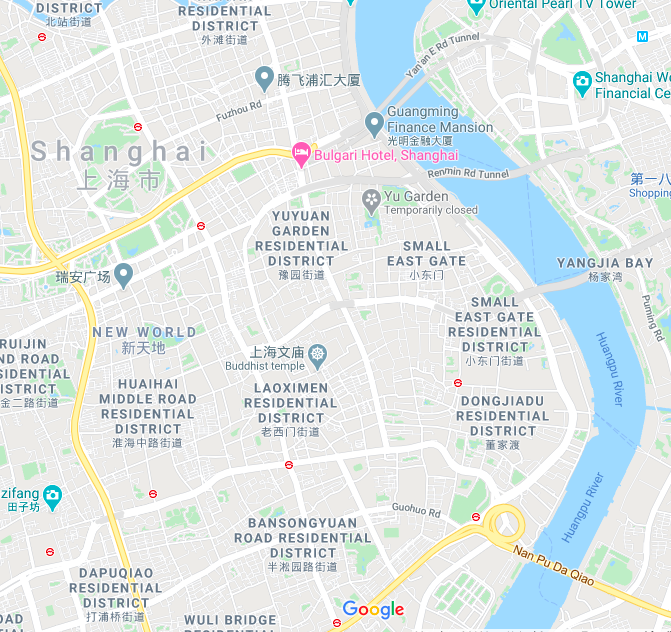



4 comments
[…] If you’re interested in Chinese architecture be sure to check out our blog on architecture in Shanghai! […]
[…] architecture of the building draws inspiration from traditional Chinese architecture such as tiered pagodas. One […]
What about other tourist attractions?
Hi Amy,
Shanghai has a number of Buddhist temples you’re welcome to visit such as the Jade Buddha Temple and Jing’an Temple. They’re both located in the Jing’an District.
LTL